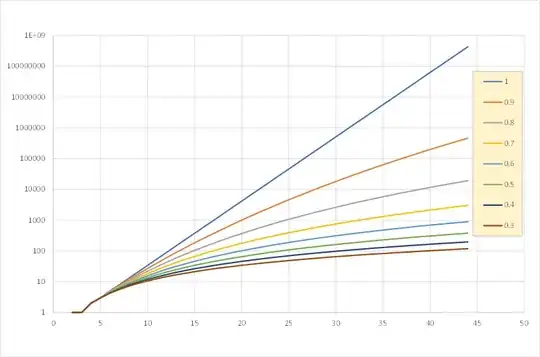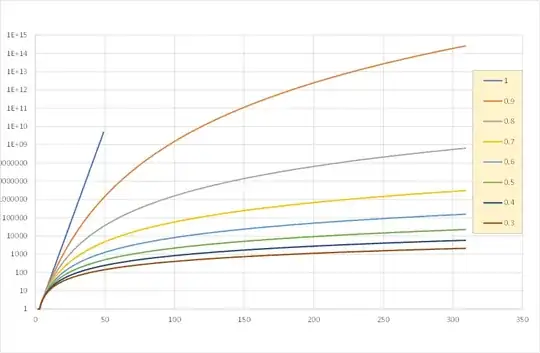The standard Fibonacci sequence defined by $F(n) := F(n-1) + F(n-2)$ has exponential asymptotic growth as stated e.g. here (with the approximate base being the golden ratio). What happens if the recurrence equation is altered by adding an exponent to $F(n-2)$? Intuitively, instead of 'add the previous number at every step', we get 'add a constant power of the previous number at every step'. I.e.,
$$ F(n) := F(n-1) + F(n-2)^c \;\;\;\;\;\text{ where }\;\;\;\; c \in (0,1) $$
What is the asymptotic growth of such a sequence, assuming starting values are still 0 and 1? (Or if this problem is too difficult, what is the asymptotic growth for $c = \frac12$ specifically?)

